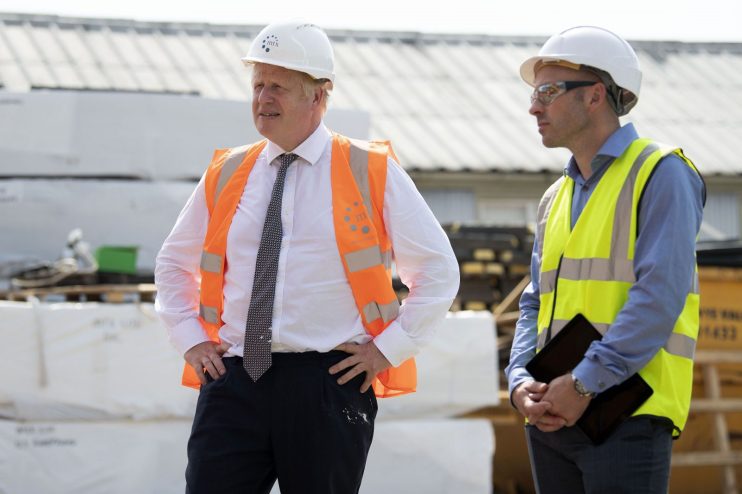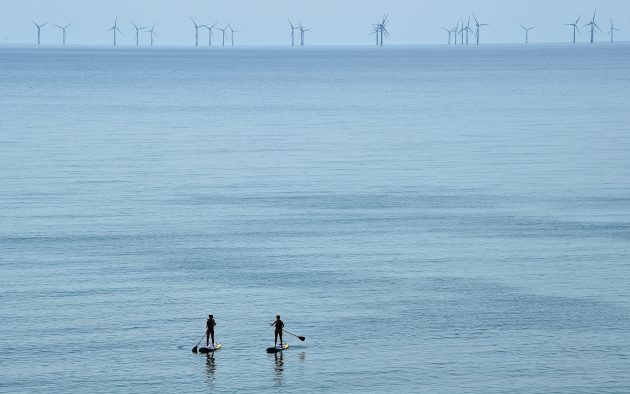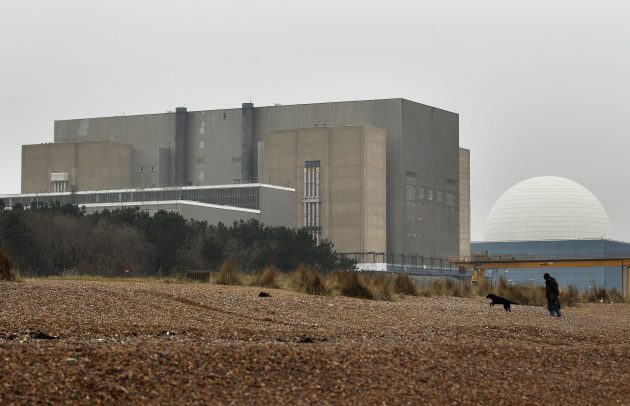Can the government hit the targets in its 10 point climate plan?

Last night Boris Johnson unveiled his much-touted 10 point plan to drive a “green industrial revolution” in the UK, creating 250,000 jobs in the process.
Featuring commitments in sectors such as heating, wind power, nuclear energy, hydrogen and electric vehicles, it has been largely positively received by industry.
However, some are concerned that some areas are currently lacking in detail, while the parliamentary Environmental Audit Committee (EAC) pointed out that the plan only amounted to £4bn in new spending.
By contrast, across the Channel Emmanuel Macron has announced that a third of France’s €100bn emergency budget will be spent on climate change initiatives.
There are also a number of areas where experts are sceptical that the government will be able to hit the targets it has set.
Electric car targets ‘incredibly ambitious’
The centrepiece of the 10 point plan is a commitment to ban the sale of new petrol and diesel cars by 2030. Previously, the date for this was set for 2035.
Although the scale of the ambition is admirable, there are a number of challenges for the government to surmount.
To hit the target, says Ian Plummer, director at Auto Trader, the sale of EVs must overtake the sale of traditional combustion engine cars by 2024.
But, he says, on the current sales trajectory this won’t happen until 2029.
With a price gap of around 15-20 per cent between petrol and diesel cars and electric vehicles, 61 per cent of people surveyed by Auto Trader said upfront costs were the main barrier to adoption.
Plummer warned that the failure to sign a free trade agreement with the EU could lead to 10 per cent tariffs on UK vehicles, which could lead to a price gap of 30 per cent.
Seán Kemple, Managing Director at Close Brothers Motor Finance, said that in order to get the right infrastructure in place, the UK will need 25m charging stations.
At the moment, there are just 18,000 charging stations in the UK. The government is putting £1.3bn towards developing this capacity.
Plummer finished: “The incredibly ambitious targets are empty without a clear, substantial path to help consumers make the change to EVs.”
Wind power or wind up?
Johnson had previously announced that the UK would seek to install 40 gigawatts of wind power by 2030 – enough to power the equivalent of every home in the UK.
But energy research firm Aurora has said that in order to fulfil this goal, the country will have to install 260 wind turbines a year – or one every single weekday – for the rest of the decade.

Rachel Eyres, energy and utilities director at Expleo, says the government would also face difficulties in adding so much power to the electricity grid.
“Offshore wind connects into electricity network, but the current system is just not yet sophisticated enough to handle the characteristics of an increase in this type of generation”, she said.
Before the Open newsletter: Start your day with the City View podcast and key market data
“Just look at the problems caused by the Hornsey 1 outage last year – the grid is already having to plan to manage things differently because of this error, and with more offshore wind the risks will only increase.”
Experts cool on hydrogen heating
Plans to develop a “Hydrogen Town”, with tens of thousands of homes powered by the technology, have also been subject to scepticism.
Multiple studies have shown that using hydrogen as a source of heat is many times more expensive than gas, leading to questions as to whether consumer bills would have to increase if such a system were to be introduced.
“While hydrogen for home heating will help replace vanishing revenue streams for incumbent gas companies, it will be much more costly than it needs to be for those paying household bills”, says University of Sussex lecturer Dr Marie Claire Brisbois. “
“It’s quite easy to see the results of industry lobbying in this announcement – but it isn’t matched by sound fiscal or thermodynamic arguments.”
There are also challenges with connecting a new gas into the grid, says Eyres. “Despite the virtues of hydrogen, the grid is going to need to undergo an immensely complicated digital upgrade before we’re ready to reap its benefits”, she added.
In addition, energy consultancy Delta-EE points out that although support for installing low carbon heating already exists, only 11 per cent of people have expressed the intention to use such grants.
Lindsay Sugden, Head of Heat Research at Delta-EE, said: “Support schemes to date have not driven the exponential growth in low carbon heating needed to meet net zero. Time for some more sticks as well as carrots?”
Nuclear plans ‘half-painted’
A strong commitment to new nuclear power was much anticipated as part of the 10 point plan, with supporters of the energy source saying that it is the only way to guarantee the UK hits its 2050 net zero target.

Despite £525m in new funding for research and development of big and small nuclear reactors, the announcement was extremely thin on the ground in terms of detail.
There had been hopes that Johnson would use the plan to give the go-ahead to a new power plant at Sizewell C. This may follow in the long-expected energy white paper.
According to union Unite, the new plant would help create 25,000 jobs during the construction phase – at the cost of around £20bn.
“What has been outlined is a canvas half-painted – we need to see the full picture”, assistant general secretary Gail Cartmail said.
Money, money, money
Finally, significant doubt remains over whether there will be enough money to make the plans a reality.
James Watson, head of decarbonisation at law firm Osborne Clarke, said that although £12bn sounds like a lot of money, PwC has suggested that the UK will need £40bn in investment every year to hit its 2050 target.
Although the 10 point plan contains an ambition to make the City of London the global centre for green finance, questions remain as to the mechanisms that will make this goal a reality.
It is hoped that the energy white paper and net zero spending reviews will add flesh to the bone of these proposals.